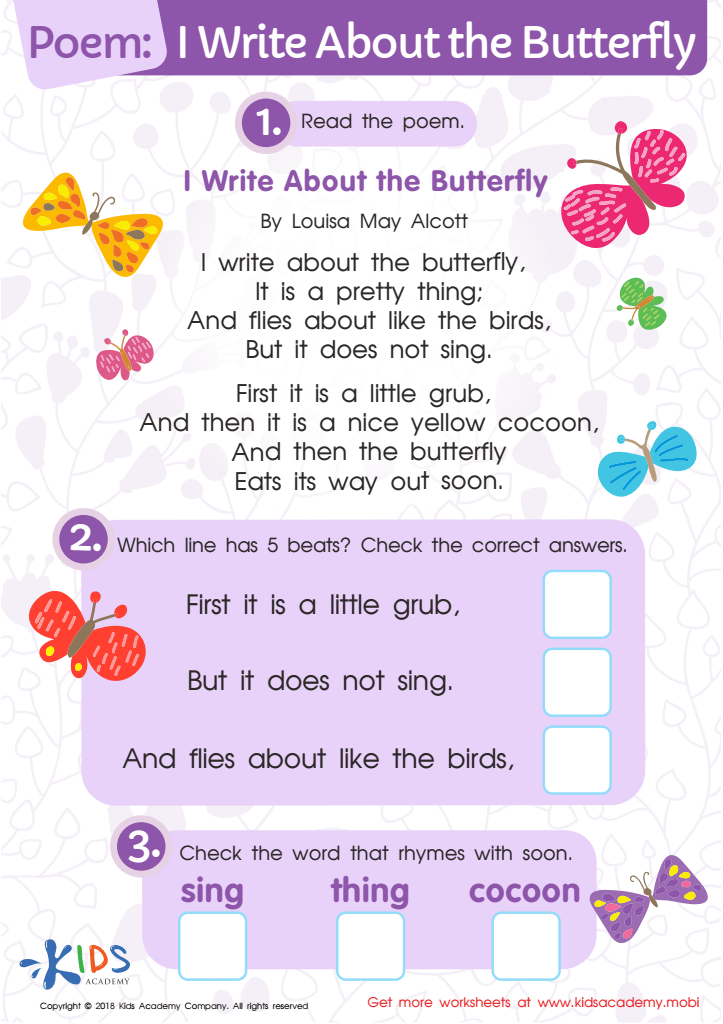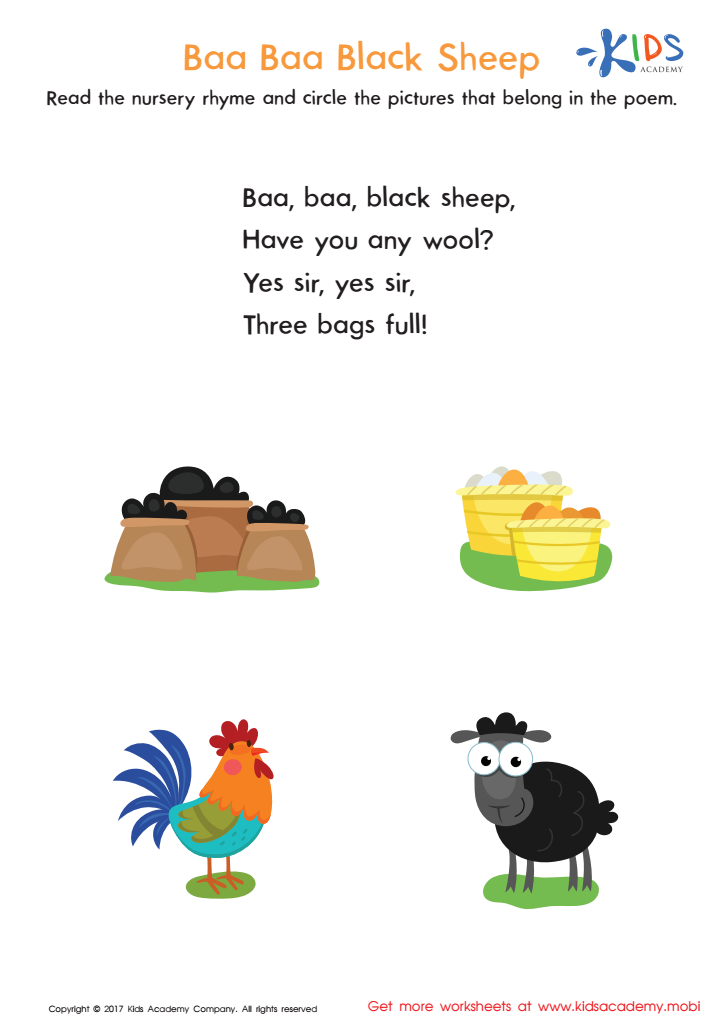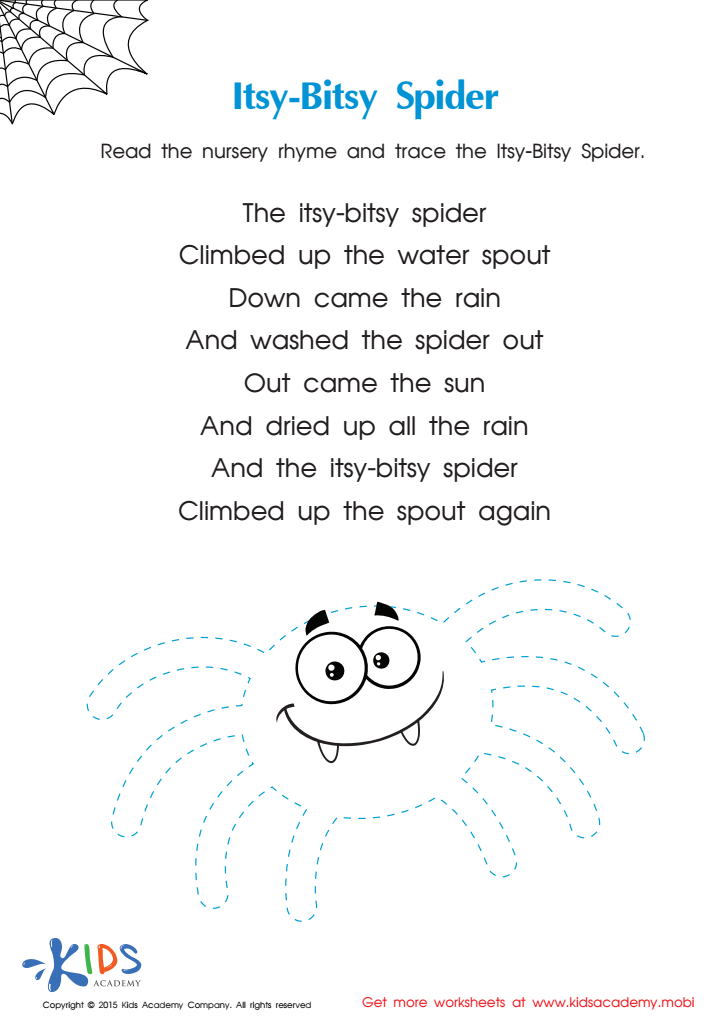Songs and Poems worksheets activities for 8-Year-Olds
16 filtered results
-
From - To


Poem: Cats and Dogs Worksheet


Poem: The Swing Worksheet


Poem: I Write About The Butterfly Worksheet


Rhymes in Poems Worksheet


Five Little Monkeys and Me Worksheet


Itsy Bitsy Spider and Me Worksheet


Baa Baa Black Sheep: Vocabulary Worksheet


Adding Up with Old MacDonald Worksheet


Rhyme In Poetry Worksheet


Hickory Dickory Dock Sequencing Worksheet


Baa Baa Black Sheep Printable


Nursery Rhyme Match–Up Worksheet


Nursery Rhymes: Twinkle Little Star Worksheet


Itsy Bitsy Spider Nursery Rhyme PDF Worksheet


Nursery Rhymes: The Bingo Song Worksheet


The Five Little Monkeys Nursery Rhyme Worksheet
Songs and Poems worksheets activities serve as a bridge connecting the realms of emotion and intellect, offering a unique approach to learning that goes beyond mere memorization or rote learning. These activities tap into the innate human love for rhythm, rhyme, and melody, transforming the classroom into a lively space where learning is as delightful as it is effective.
Firstly, Songs and Poems worksheets activities cater to a wide range of learning styles. For auditory learners, the musical elements of songs and the rhythmic qualities of poems make learning more accessible and engaging. Visual learners, meanwhile, benefit from the written aspects of these activities, such as identifying patterns, themes, and structures within the text. Kinesthetic learners are not left out either; they can engage through activities that involve movement, such as clapping to a poem's rhythm or acting out parts of a song.
Moreover, Songs and Poems worksheets activities enhance linguistic skills. They introduce learners to new vocabulary in a context that makes the meaning memorable. The repetition often found in songs and poems aids in reinforcing language learning, helping students to remember new words and phrases. Additionally, these activities expose learners to various literary devices and elements of poetry, such as metaphors, similes, alliteration, and assonance, thereby deepening their understanding and appreciation of language.
Engagement and motivation are significantly boosted through Songs and Poems worksheets activities. The fun and enjoyment derived from working with music and poetry can increase students' willingness to participate and can transform learning into a joyful experience. Furthermore, these activities foster creativity and critical thinking, encouraging students to interpret meanings, analyze themes, and express their thoughts and feelings.
In conclusion, Songs and Poems worksheets activities are an invaluable tool in education. They not only make learning more enjoyable and engaging but also enrich students' linguistic abilities, cater to diverse learning needs, and promote creative and critical thinking. Through these activities, learning becomes a harmonious blend of enjoyment and enlightenment.

 Assign to My Students
Assign to My Students









.jpg)











